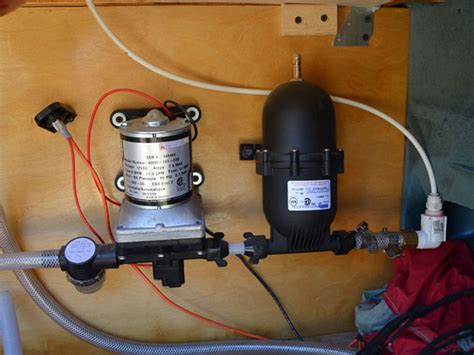RPod Water Pump Troubleshooting Made Simple
Dealing with a malfunctioning water pump in your RPod can quickly turn a relaxing camping trip into a frustrating ordeal. But don't despair! Understanding the common causes of RPod water pump issues can empower you to diagnose and fix the problem yourself, often saving you time and money. This guide will walk you through troubleshooting your RPod water pump, providing simple solutions for common problems.
Why Isn't My RPod Water Pump Working?
This is the most frequent question asked by RPod owners facing water pump woes. The answer isn't always straightforward, but systematic troubleshooting will usually pinpoint the issue. Let's explore the most likely culprits.
1. Is the Pump Switched On?
This might seem obvious, but it's the first and easiest check. Ensure the water pump switch, typically located inside your RPod's control panel, is turned on. Many RPods feature indicator lights to confirm the pump's operational status.
2. Low Water Level in the Fresh Water Tank:
A surprisingly common reason for a non-functional pump is a simple lack of water. Check your fresh water tank level. If it's low, refill it and try again. The pump might be trying to draw water from an empty tank, causing it to overheat and shut down. This is often accompanied by a humming or whirring sound from the pump itself.
3. Air in the Lines:
Air trapped in the water lines can prevent the pump from effectively drawing and delivering water. This often manifests as a sputtering or weak water flow. To remedy this, you can try bleeding the air from the system. This usually involves opening the faucets at the highest points in your RPod (usually the furthest from the water pump) and letting the water run until a steady stream emerges, free of air bubbles.
4. Faulty Water Pump Switch:
If the switch appears to be functioning correctly but the pump doesn't turn on, the switch itself could be faulty. A simple multimeter test can determine if the switch is delivering power correctly. If it's not, replacing the switch is usually a straightforward fix.
5. Blown Fuse or Tripped Circuit Breaker:
Your RPod's water pump is likely protected by a fuse or circuit breaker. Check the fuse box or breaker panel and replace a blown fuse or reset a tripped breaker. Make sure to replace the fuse with one of the same amperage rating.
6. Pump Motor Failure:
If all the above checks are clear, the problem likely lies with the pump motor itself. A failing pump motor might make unusual noises, such as grinding or clicking, or simply fail to activate. This usually requires replacement of the entire water pump assembly. It's advisable to consult a qualified RV technician or refer to your RPod's manual for guidance on pump replacement.
My RPod Water Pump is Making Noise, But Not Pumping Water
A noisy water pump, without sufficient water pressure, often points to a different set of issues:
1. Pump Impeller Problems:
The impeller, a rotating part within the pump, is responsible for drawing water. If it's damaged or worn, the pump might make noise but fail to deliver water effectively. Replacement of the impeller might solve this. Again, referring to your RPod's manual or seeking professional assistance is best.
2. Clogged Water Lines:
Sediment or debris can accumulate in your water lines, restricting water flow and causing the pump to work harder and make more noise. A thorough flushing of the water lines might resolve this.
3. Dry Running:
As mentioned previously, running the pump without sufficient water in the tank causes it to overheat and can result in noise. Always check your water tank level before operating the pump.
Preventing Future RPod Water Pump Problems
Regular maintenance can significantly extend the life of your water pump and prevent unexpected breakdowns:
- Regularly flush your water lines: This helps prevent clogs.
- Winterize your system: Proper winterization protects your pump and water lines from freezing damage.
- Check your water tank levels: Avoid dry running the pump.
- Inspect the pump for any signs of damage or wear: Addressing minor issues early can prevent major problems.
By following these troubleshooting tips and practicing preventive maintenance, you can significantly reduce the chances of experiencing frustrating water pump issues with your RPod. Remember, if you’re uncomfortable with any of these steps, seeking professional assistance is always the best course of action.

